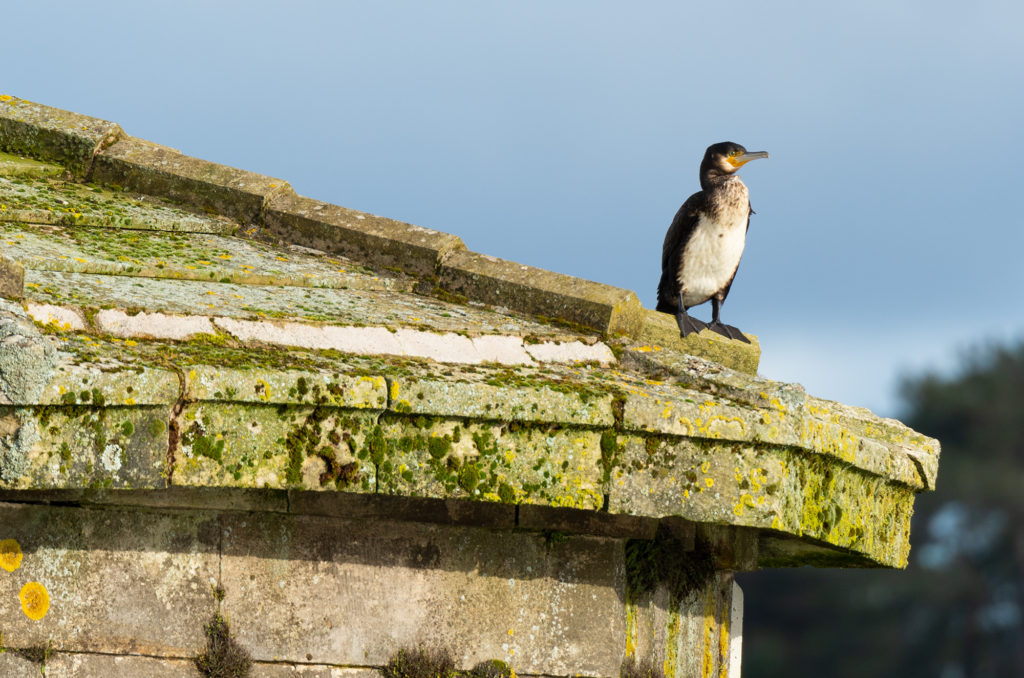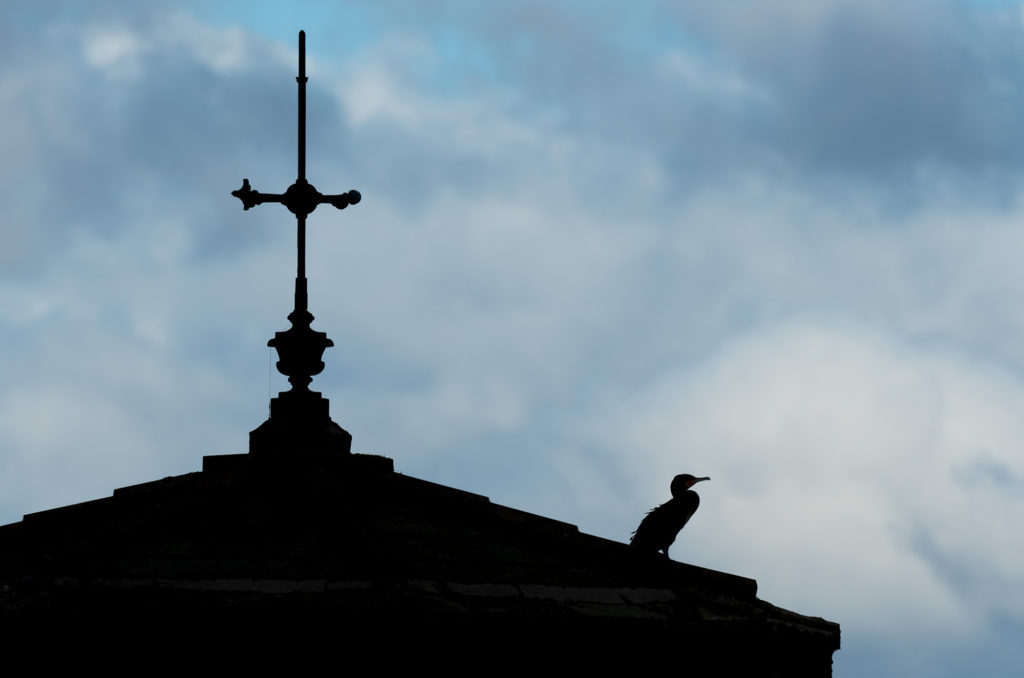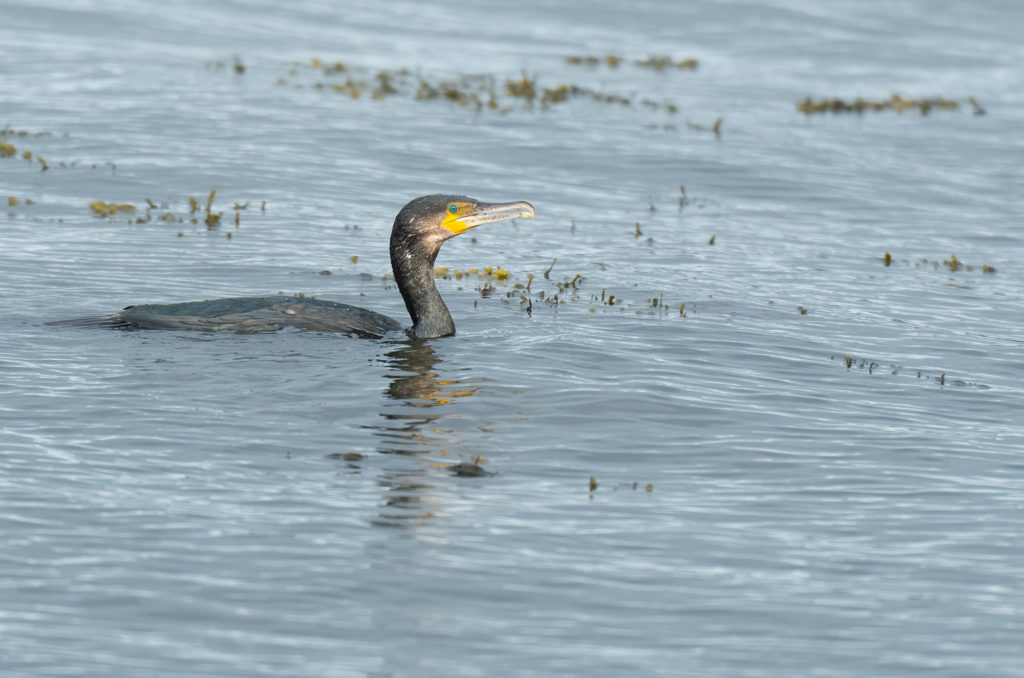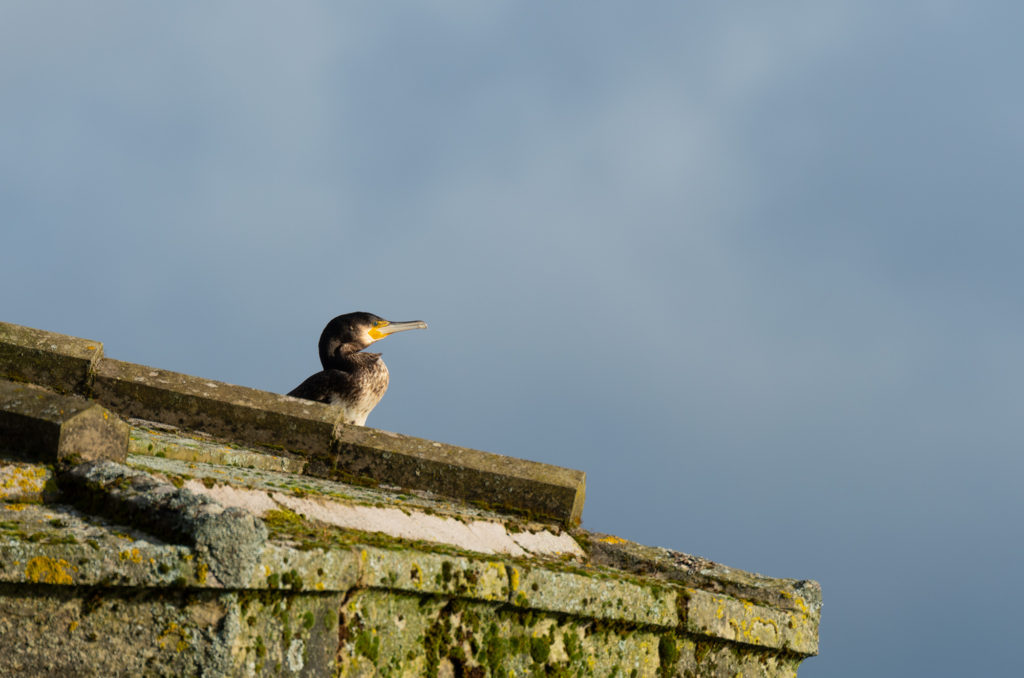If you’re looking for a visual example of the missing link between modern bird species and the therapod dinosaurs they are related to, the cormorant might fit the bill. These birds have a distinctly primitive look. Take a look at paintings of Archaeopteryx – the Late Jurassic fossil usually thought to be the earliest bird – and compare this with the images on this page, and you’ll see what I mean.
If you are beginning your wildlife photography journey and looking for a subject, you could also do worse than a cormorant. If you’re looking for a bird that strikes a dramatic pose, you’ve got it. If you want a bird that flies in a straight line to practice your panning skills, this is the species for you. Plus, your nearest cormorant probably isn’t too far away in the UK. You can spot this fish-eating waterbird along our coastlines and inland bodies of water such as lakes and rivers. The UK is an important winter location for these birds.

The trickiest aspect of watching cormorants is often identifying that the bird you are looking at is indeed a cormorant, particularly at the coast. This species is easily confused with the sea-loving shag, with the juveniles often requiring a second look. A good tip is to check the forehead of the bird you’re trying to identify. A steep forehead with a peak at the front of the head should indicate a shag, whereas the cormorant has a flatter, more streamlined appearance with the crown peaking at the back of its head.
Perhaps it is their abundance, along with their lack of activity, that causes cormorants to be overlooked. On my wanders, I rarely hear anyone say: ‘wow, check out that cormorant’…unless it’s me saying it out loud. If you usually pass these birds by with barely a cursory glance, I encourage you to pause and take a long look.

Firstly, there’s the posing and the length of time they spend holding each stance. These minutes are perfect for playing around with your exposure, changing position or going to grab an ice cream – they’ll probably be holding that pose when you get back. There is something vampirish in the way that cormorants perch with their wings outstretched to dry them. When held out, the scaly, black, 130-160cm wingspan looks like a poor attempt at a Bela Lugosi impersonation, but the cormorant has to pose like this to dry its wings off after diving for fish. Some think that cormorant feathers are less waterproof than other birds that spend a similar amount of time in the water. However, as their preening gland is a similar size to other aquatic birds, it has been noted that their feathers may just become more water-logged due to the long periods that they spend submerged in the water.

The good news is that they often spend vast lengths of time in the same spot. I captured the juvenile cormorant below earlier this month when the late afternoon sun was just about warm enough to encourage me to remove my coat. This bird was sunning itself at a local reservoir. It spent a long time perched at the top of this A-listed draw-off tower, which provided me with plenty of opportunities to photograph it from various angles.

These birds are active, sometimes, and photographing this species fishing can become a fun guessing game of ‘where will the bird pop up?’ A traditional method of catching fish uses trained cormorants. To prevent the bird from eating the fish, a snare is tied around its throat so that it spits out its catch. The bird can eat small fish, but the snare forces them to save the larger ones for the fishermen. Historically, cormorant fishing has taken place in Japan, China, Greece, North Macedonia, England and France. It now only takes place in southwestern China and is a method mainly saved for impressing tourists.
Finally, to photograph a cormorant in flight, watch for a dark shape flying low over the water with pumping wingbeats as you stand with your ice cream dripping onto your shoe. Wow, check out that cormorant.

